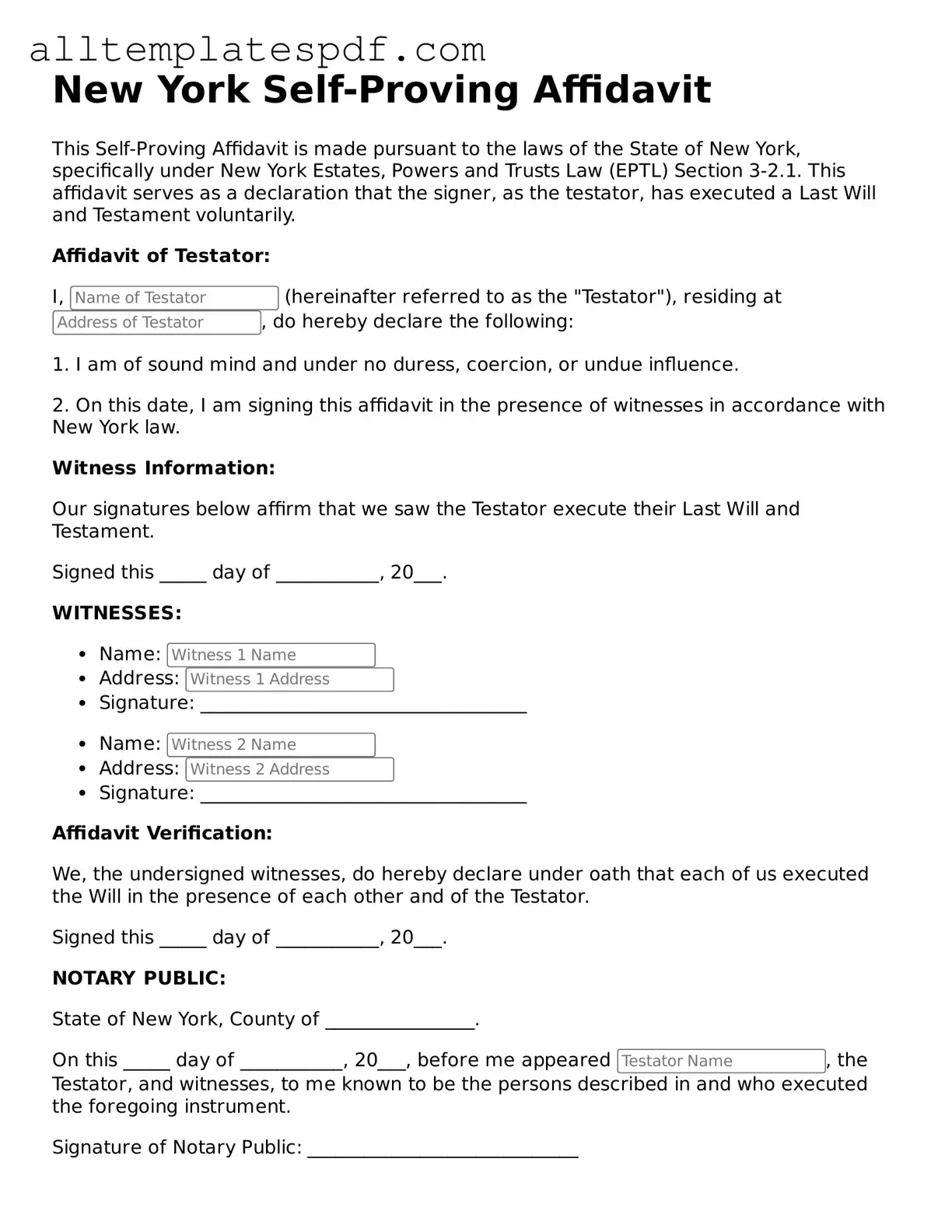Filling out the New York Self-Proving Affidavit form can be a straightforward process, but there are common mistakes that individuals often make. Recognizing these pitfalls can help ensure that the affidavit is completed correctly and serves its intended purpose.
One common mistake is failing to properly identify the testator. The testator is the person whose will is being proven. It is crucial to include their full legal name and any other identifying information. Omitting this information can lead to confusion and potential legal complications down the line.
Another frequent error is neglecting to include the date of the will. The affidavit must reference the specific will being attested to. Without a clear date, it may be difficult to establish which version of the will is being validated, leading to possible disputes among heirs or beneficiaries.
People often overlook the need for proper signatures. The affidavit requires the signatures of both the testator and the witnesses. If any of these signatures are missing, the affidavit may not be considered valid. It is essential to ensure that all parties involved sign the document in the appropriate spaces.
In addition, some individuals forget to include the notarization. A self-proving affidavit must be notarized to be legally binding. Without a notary's signature and seal, the document may not hold up in court, which can undermine the validity of the will itself.
Another mistake involves the witness statements. Witnesses should provide clear and concise statements regarding their presence during the signing of the will. If these statements are vague or incomplete, it can lead to challenges regarding the authenticity of the will.
Many people also fail to review the form for accuracy. Simple typographical errors or incorrect information can have significant consequences. Taking the time to double-check the details can prevent issues that may arise later during probate.
It is also important to remember that the affidavit should be filled out in ink. Using pencil or any erasable medium can create doubts about the authenticity of the document. Always use a permanent pen to ensure the affidavit remains intact and legible.
Lastly, individuals sometimes neglect to keep copies of the completed affidavit. Having a copy on hand is essential for reference and can be beneficial if questions arise in the future. Storing the affidavit with the will ensures that it is easily accessible when needed.
By being aware of these common mistakes, individuals can approach the New York Self-Proving Affidavit form with greater confidence. Taking the time to carefully fill out the form can help ensure that the wishes of the testator are honored and respected.
